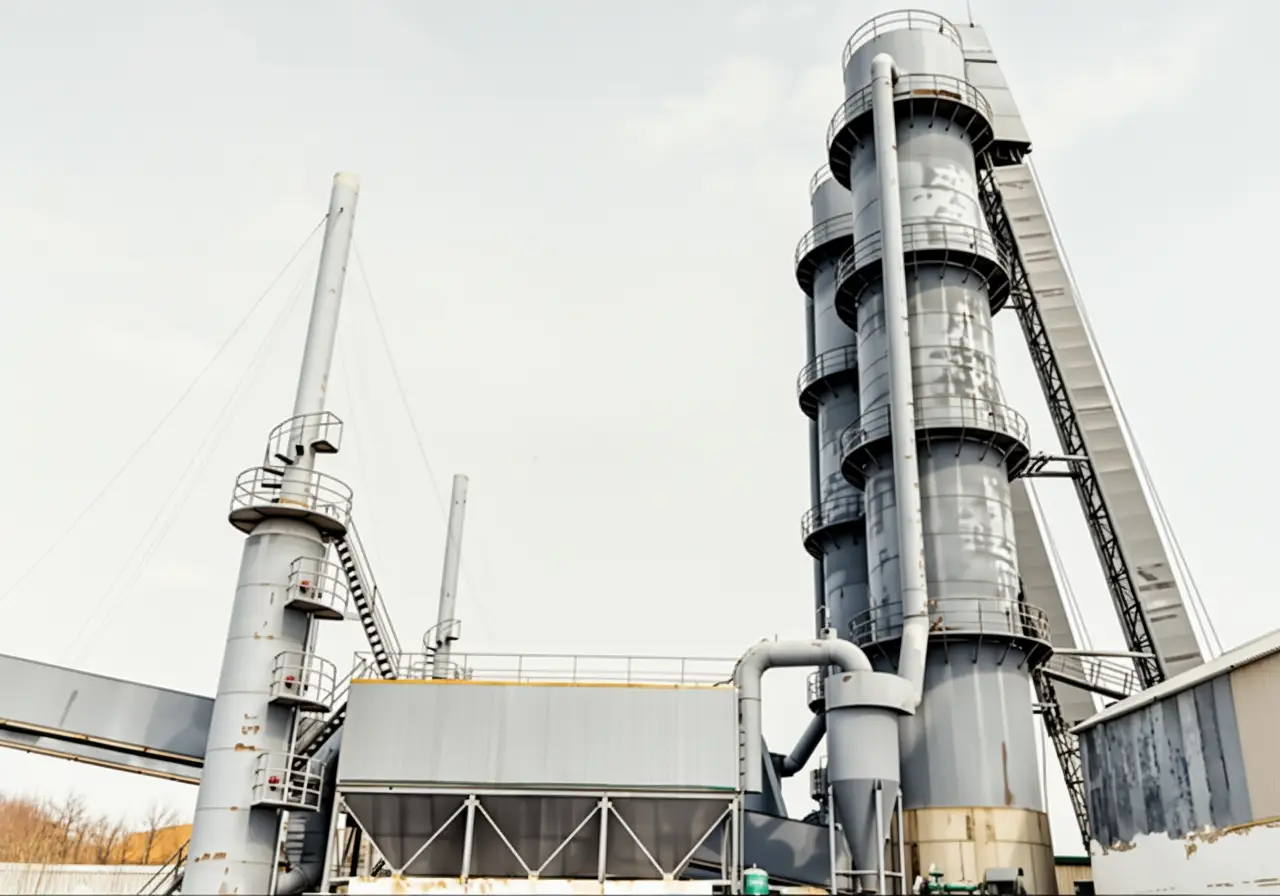Vertical Shaft Kiln
A Vertical Shaft Kiln (VSK) is a vital kiln type used for producing cement, lime, and other materials. It is known for its vertical orientation, where raw materials undergo calcination and transformation into desired products through high-temperature processing. VSKs are commonly used in industries that require efficient and cost-effective production methods.

Vertical Shaft Kiln
Structure
The vertical shaft kiln is characterized by its simple and compact design. It comprises a vertical cylinder lined with refractory materials, a feeding system at the top, and a discharge system at the bottom. This setup facilitates uniform heat distribution and efficient material processing throughout the kiln.
Working Principle
In a vertical shaft kiln, raw materials are fed from the top. As they descend, they encounter rising hot gases, which facilitate the calcination process. The countercurrent heat exchange ensures efficient energy use, allowing raw materials to undergo the necessary chemical transformations. This vertical design ensures that materials are evenly heated, promoting consistent quality in the final product.
Features
Vertical shaft kilns are energy-efficient, with lower fuel consumption compared to traditional kilns. They offer precise temperature control and uniform product quality due to their vertical structure. These kilns are also space-saving, making them suitable for facilities with limited floor space. Additionally, VSKs are cost-effective, involving lower capital investment and maintenance costs.
Environmental Impact
VSKs contribute to reduced emissions due to their efficient design and controlled processing environment. They support sustainable production practices, aligning with modern environmental standards.
Conclusion
The vertical shaft kiln, provided by DMPCR, is a reliable and efficient solution for producing cement and lime. Its energy efficiency, compact design, and consistent quality output make it an ideal choice for industries seeking sustainable and cost-effective production methods.
